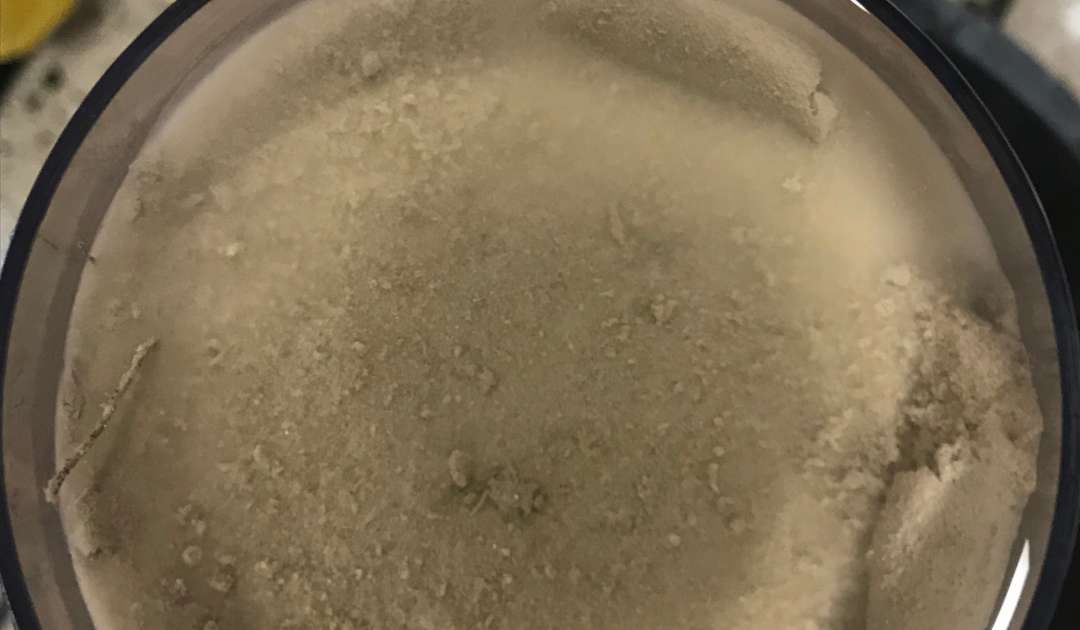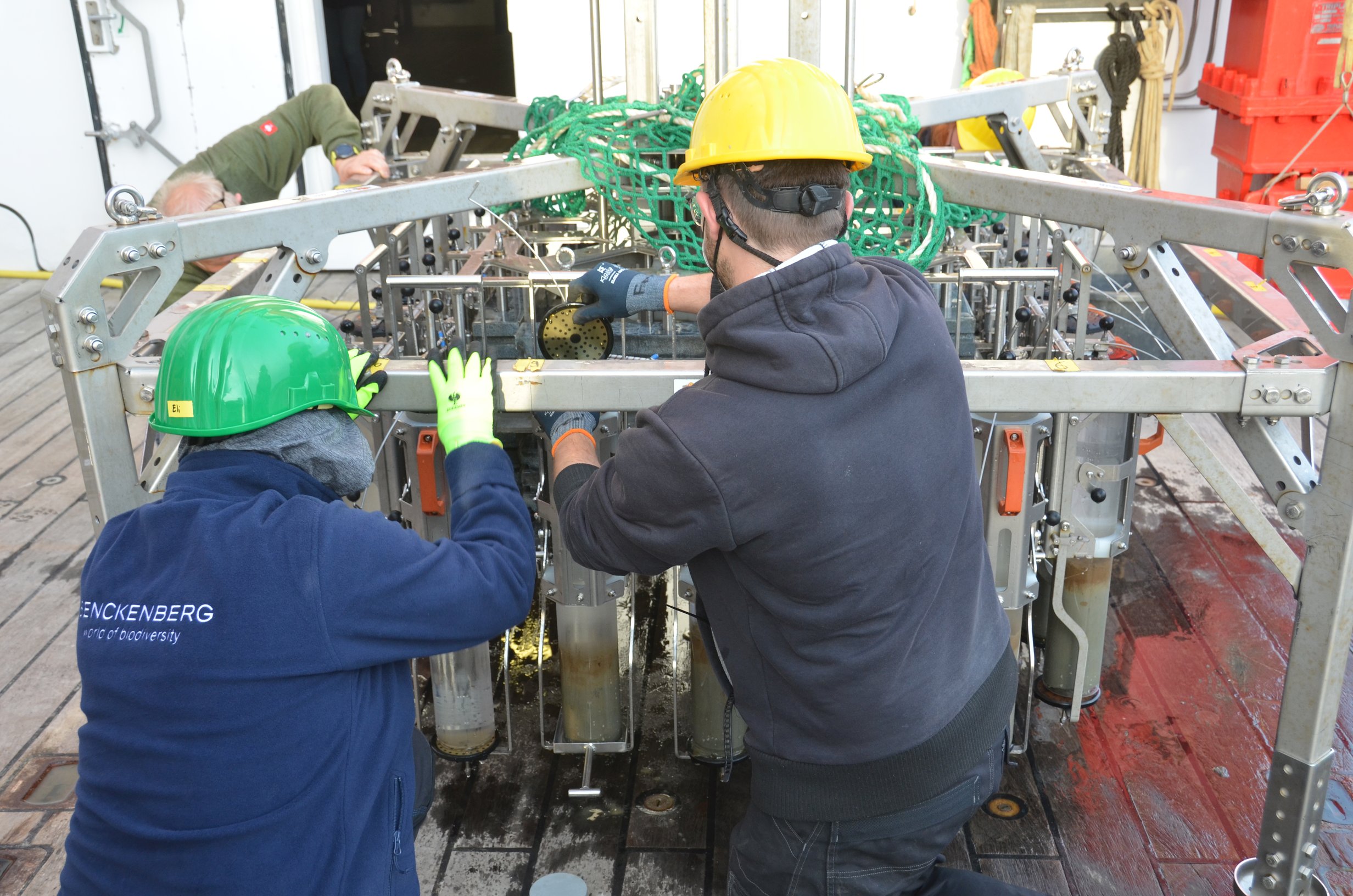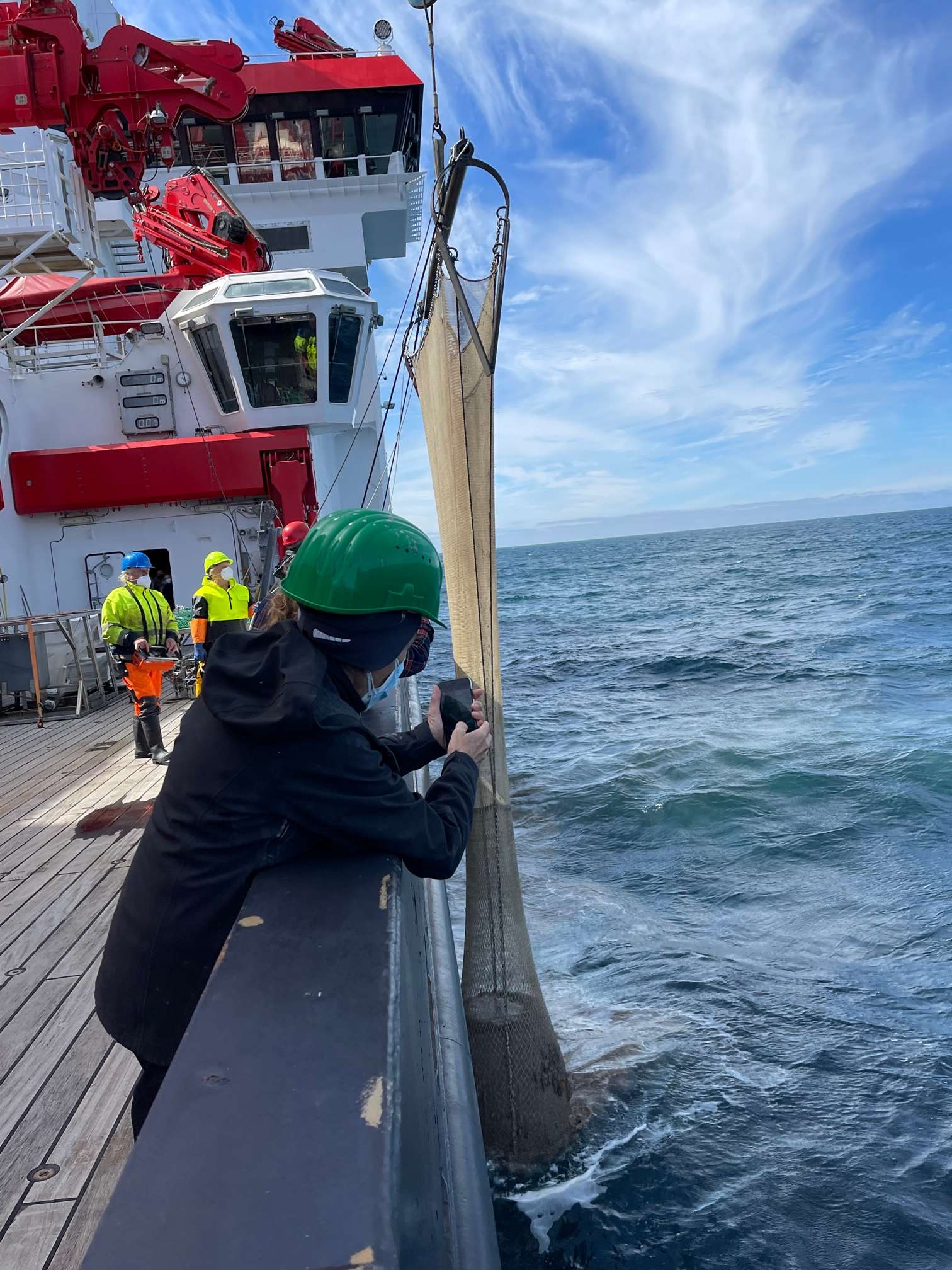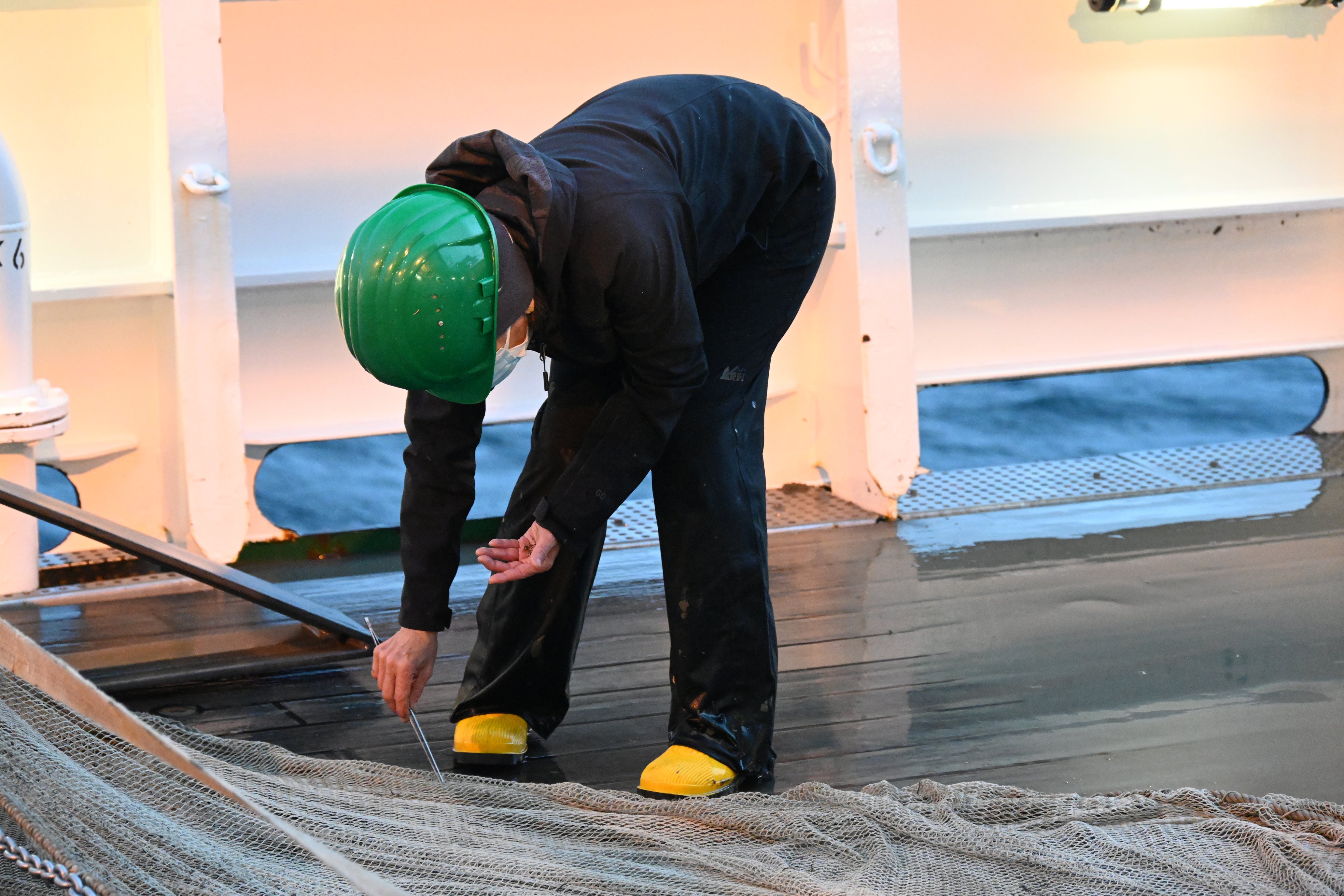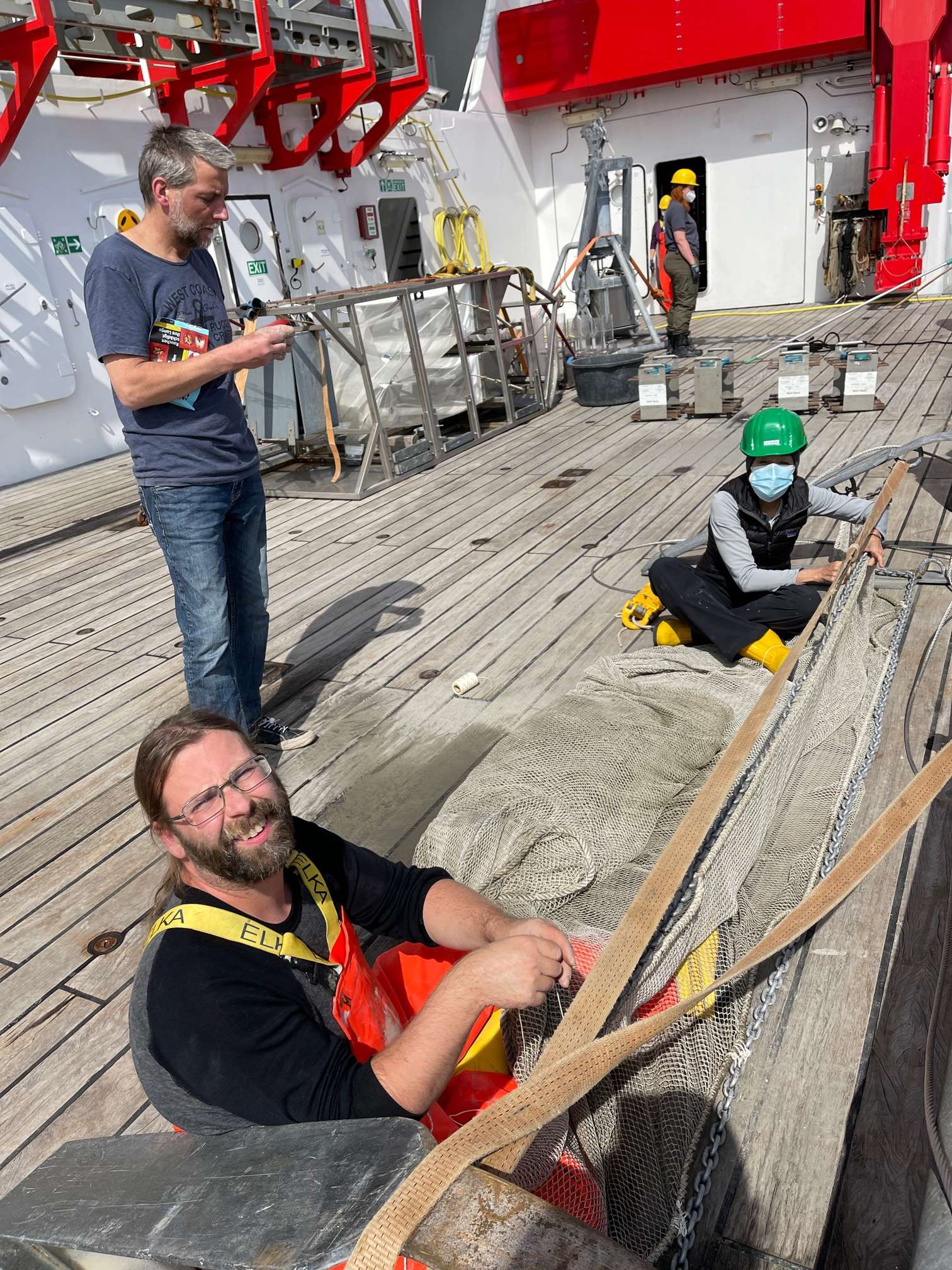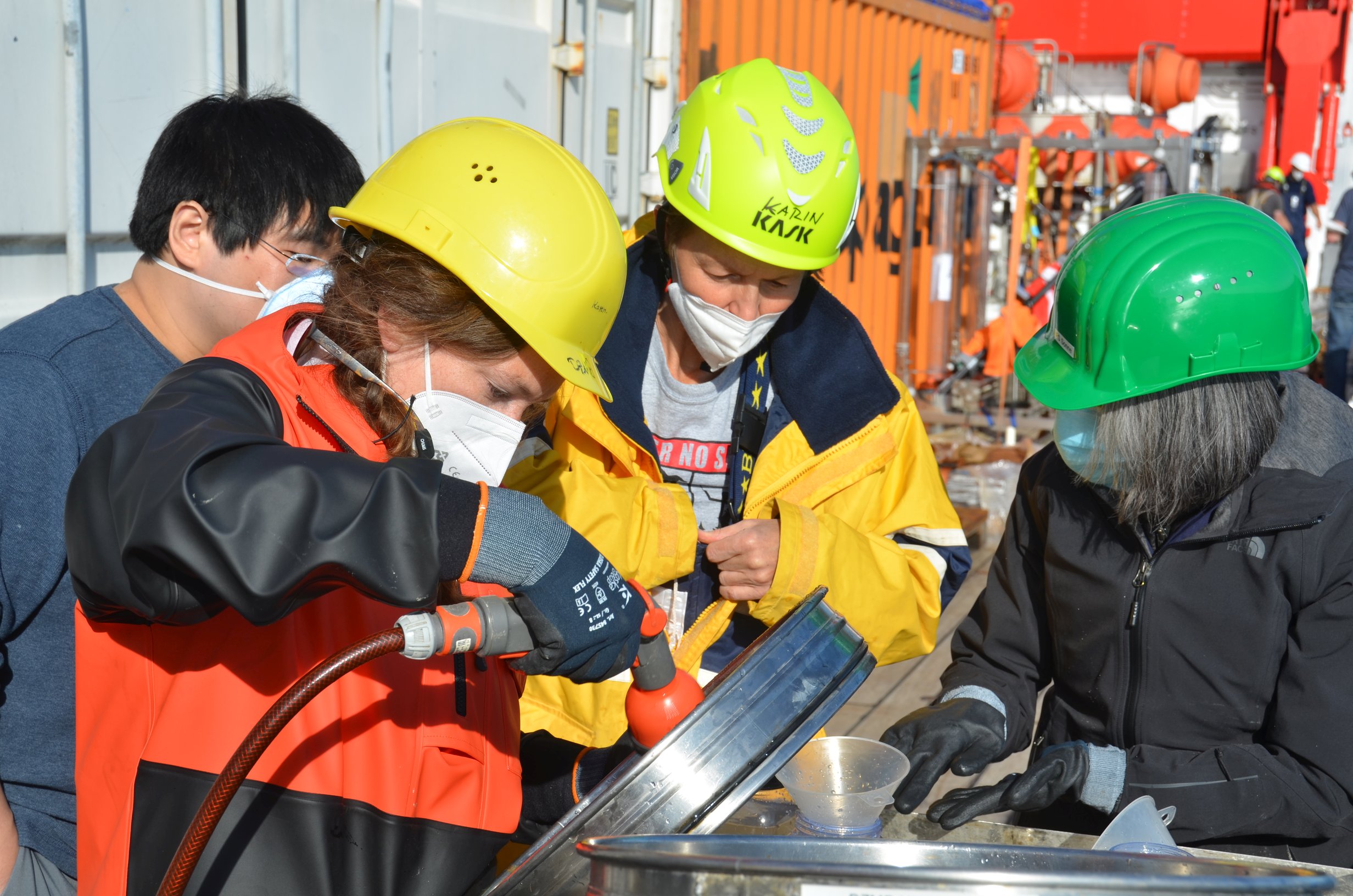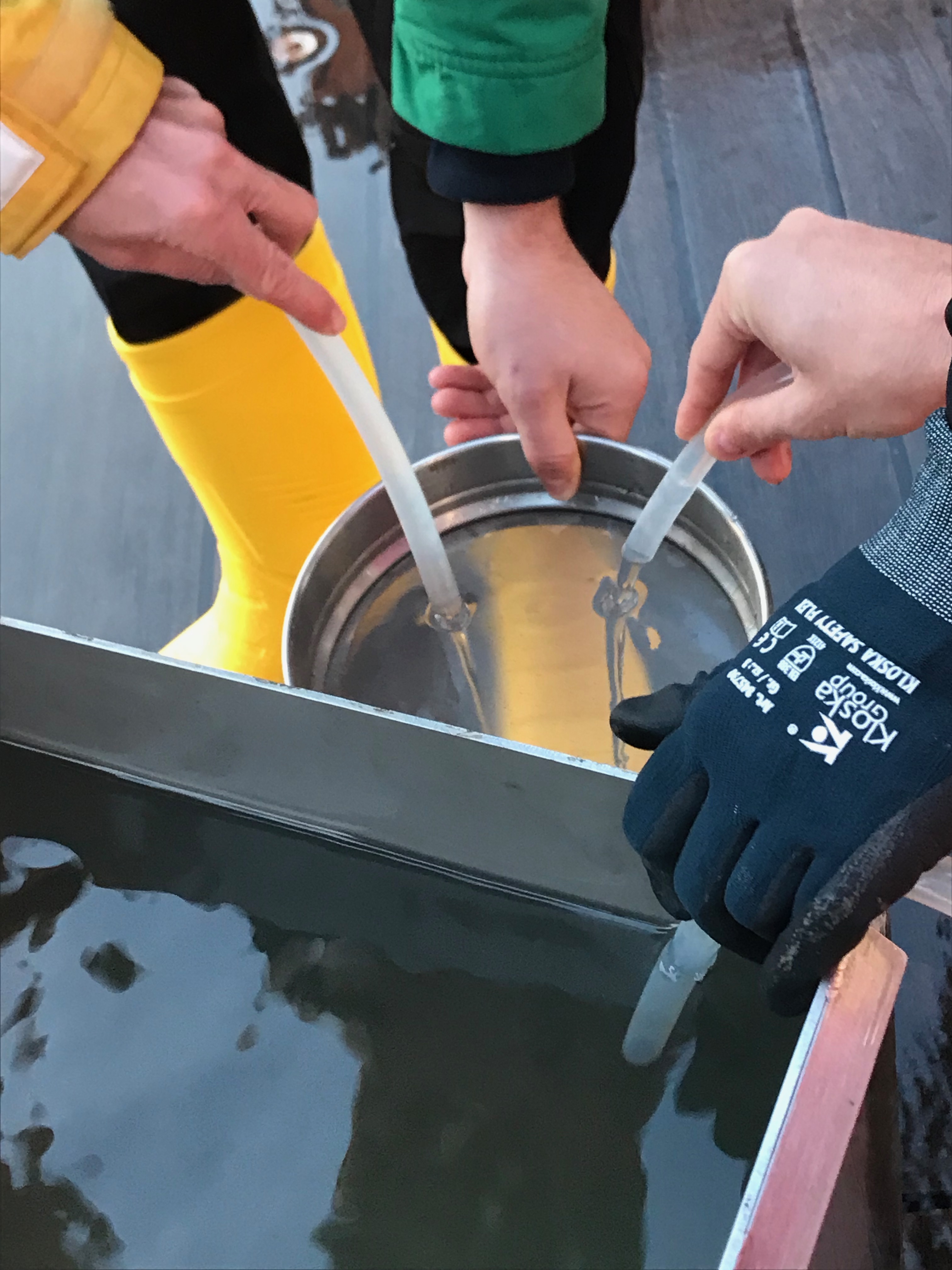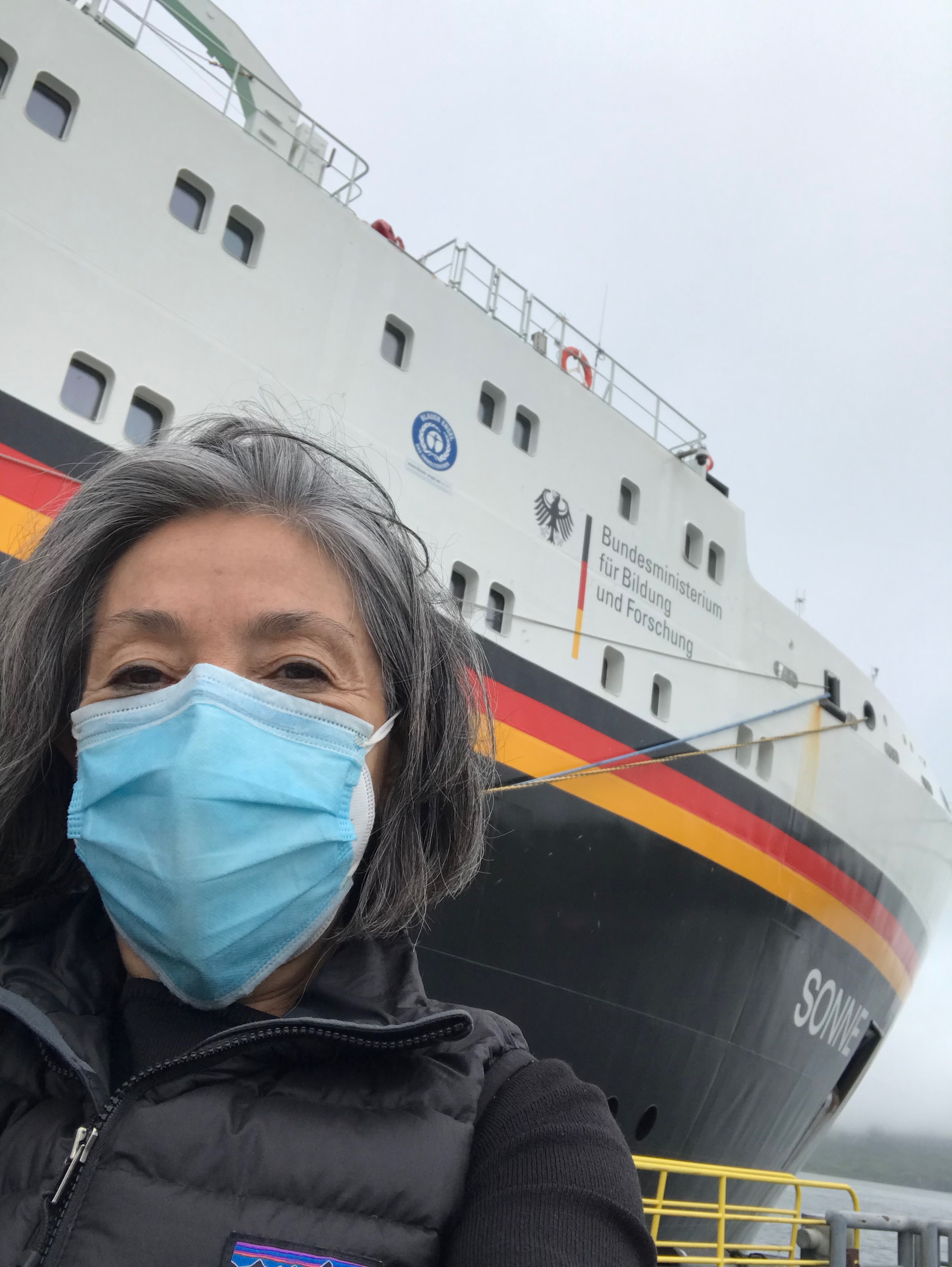Who am I?
My name is Elva Escobar, I am a senior scientist from the Institute of Marine Sciences and Limnology at the National Autonomous University of Mexico. I have studied the deep-sea seafloor soft sediment biodiversity for the last 35 years. My research has been useful in understanding how species are distributed under limited supply of food conditions at high pressure, darkness, and low temperature, and how these distributions change in space and time. This knowledge has been applied to design deep-sea conservation areas. I joined the AleutBio expedition for several reasons. The most important one is to contribute my expertise in soft sediment deep-sea ecology, knowledge I have gained using similar equipment and sample processing. Moreover, I am happy to be part of an international group of experts that will study the abyssal and hadal biodiversity of a trench transect. In this way I am getting a glimpse into understanding differences between components of high latitude biodiversity in contrast with those of the tropics where I have worked. Other reasons for my participation include the opportunity to interact with the experts and understand the diverse collecting tools and learn about the state-of-the-art methodologies used for integrative taxonomy which help the understanding of deep-sea biodiversity.
I have used many of the tools used in this expedition to obtain sediment samples (trawls, box corer (BC), multiple corer (MUC)), both at home and during international expeditions. We also deployed an Ocean Floor Observing System (OFOS). The epibenthic sled (EBS) is a trawled gear that has been used for several decades and improved for sampling through scientists in this group. The EBS is an important and very efficient gear for collecting macrofauna (and partly also megafauna) for the study of deep-sea biodiversity. It is usually hauled over the seafloor for approximately 1 km. I plan to contribute to this cruise’s science through determining biomass of dominant benthic components, comparing richness between MUC and BC samples, and by sorting samples as well as with the identification of specimens of Mysida and Leptostraca. For these activities I will require the access of samples onboard. I plan to involve two collaborating young scientists to work with the Bryozoa and Pygnogonida from this expedition through borrowing specimens on temporary loan after the cruise.
One thing that I value the most on board is collaborating and coinciding with people with important skills and taxonomic knowledge, with the knowledge and extensive experience of how to operate the gear and maintaining an extensive database in order to keep keep track of the samples and the data resulting from sample processing on board. I am fortunate that while I contribute with my humble expertise in tropical deep-sea biodiversity and sampling, the cruise offers me a space for dialogue on the challenges, the benefits and limitations of the newest strategies and gear used in the quest for understanding deep-sea biodiversity and provides an integrative basis for improving scientific knowledge. I feel grateful to be onboard because this experience provides an opportunity for interaction with international renown scientists, leaders, their teams, and students. It provides a chance to learn how equipment is operated, samples collected, dynamic positioning managed, rope length, speed, tension of the wire mastered.
The AleutBio cruise is a fundamental cornerstone in the understanding of abyssal and hadal biodiversity. These weeks of work onboard have contributed to new records for taxa, on diversity and density of megafaunal animals on the seafloor as well as burrows and their use by local species’. We also learnt about differences of this trench compared to the Kuril-Kamchatka Trench as well as this trench faunal composition and species’ connectivity.
I am very positively impressed by the first results.
